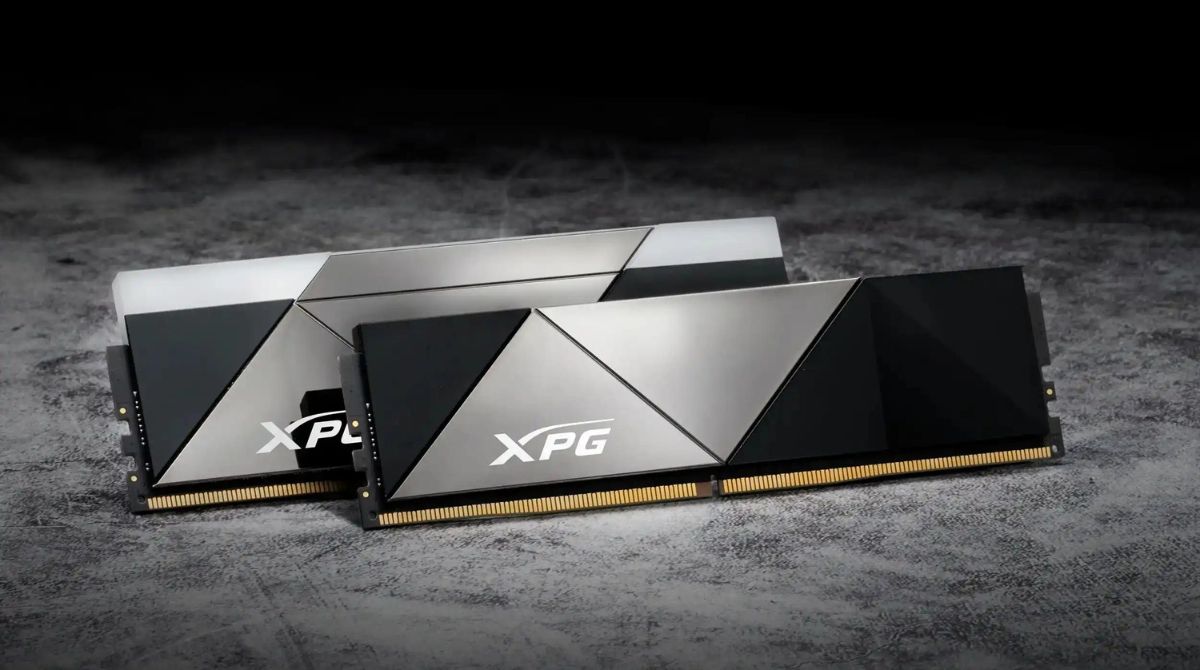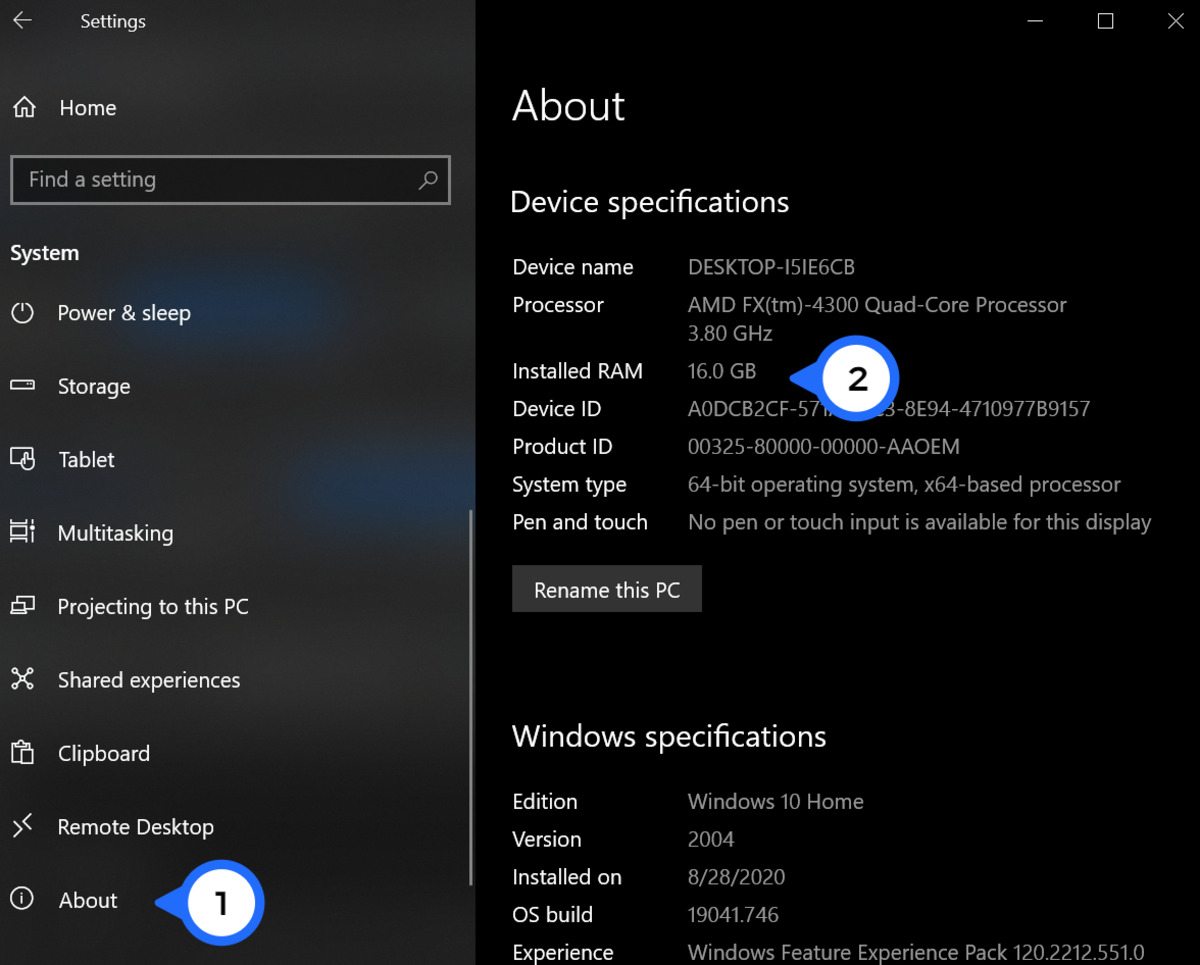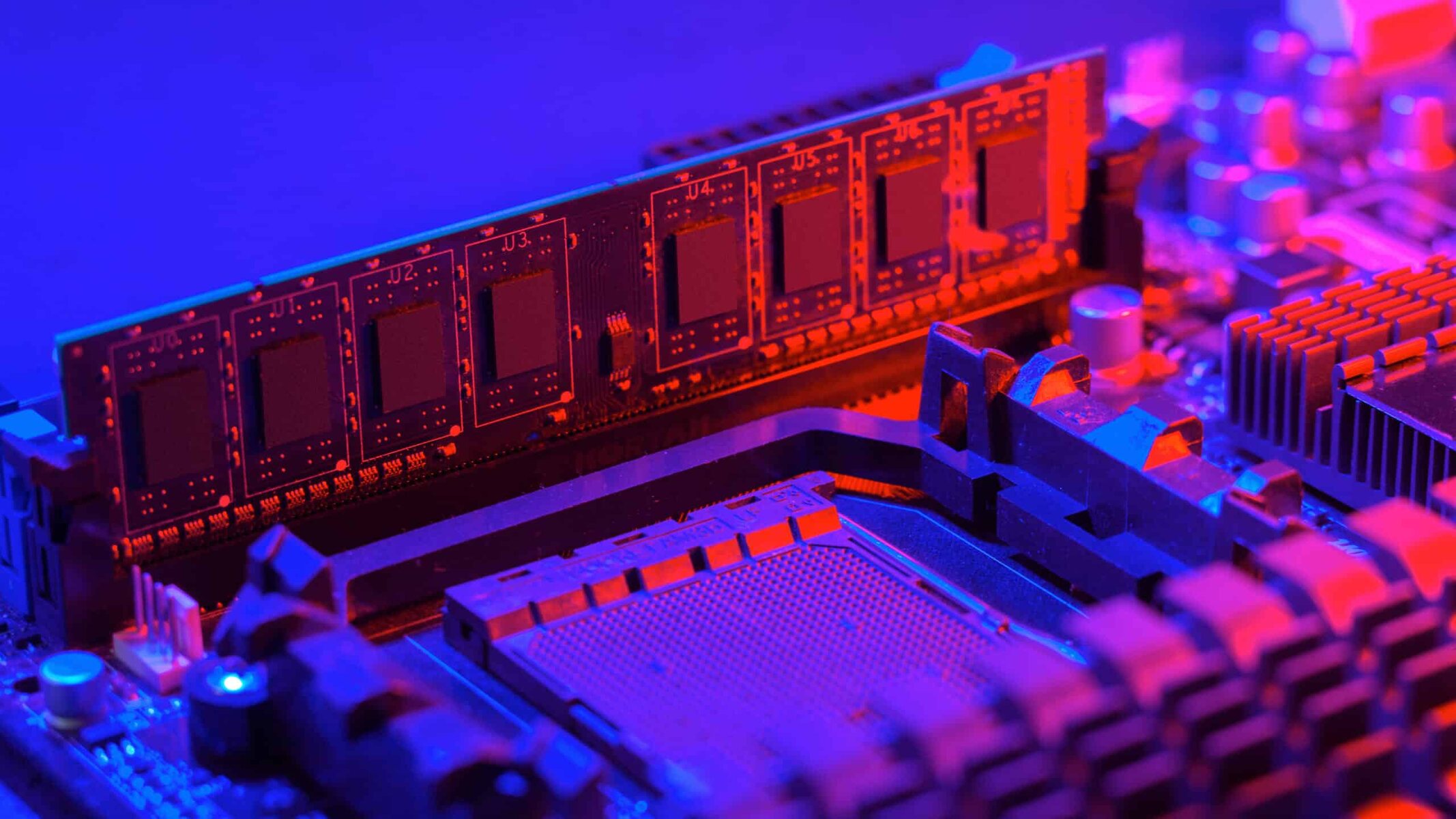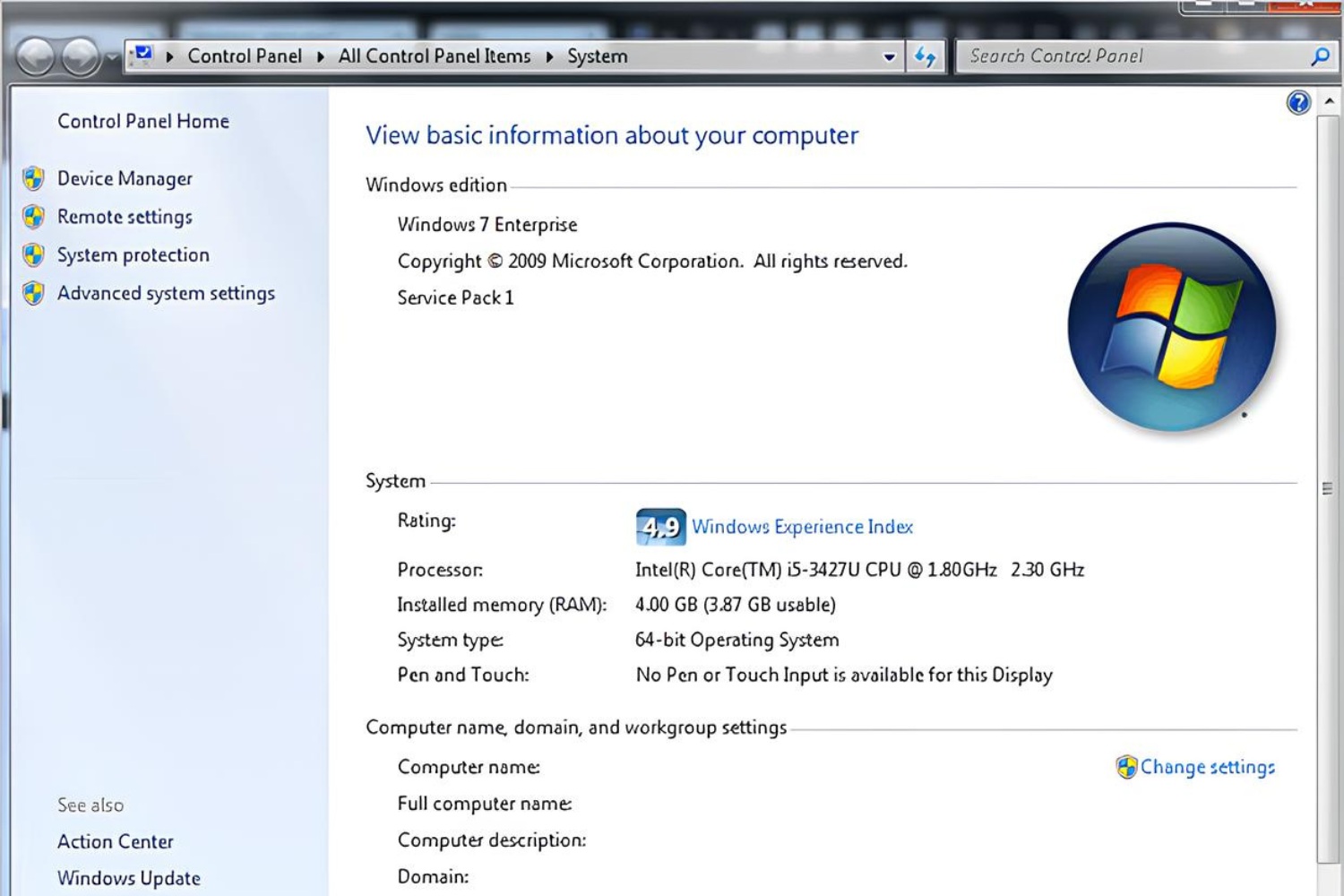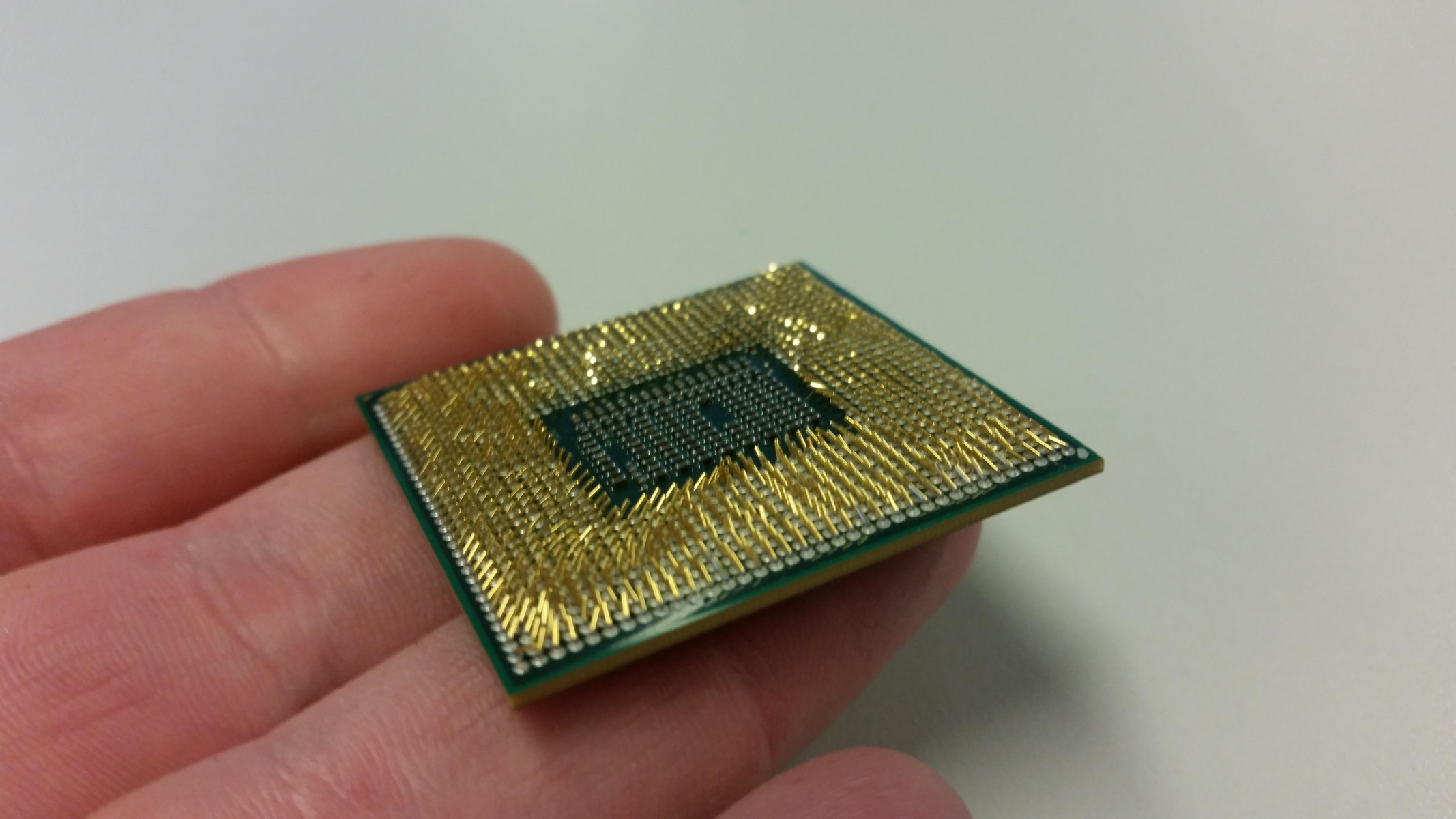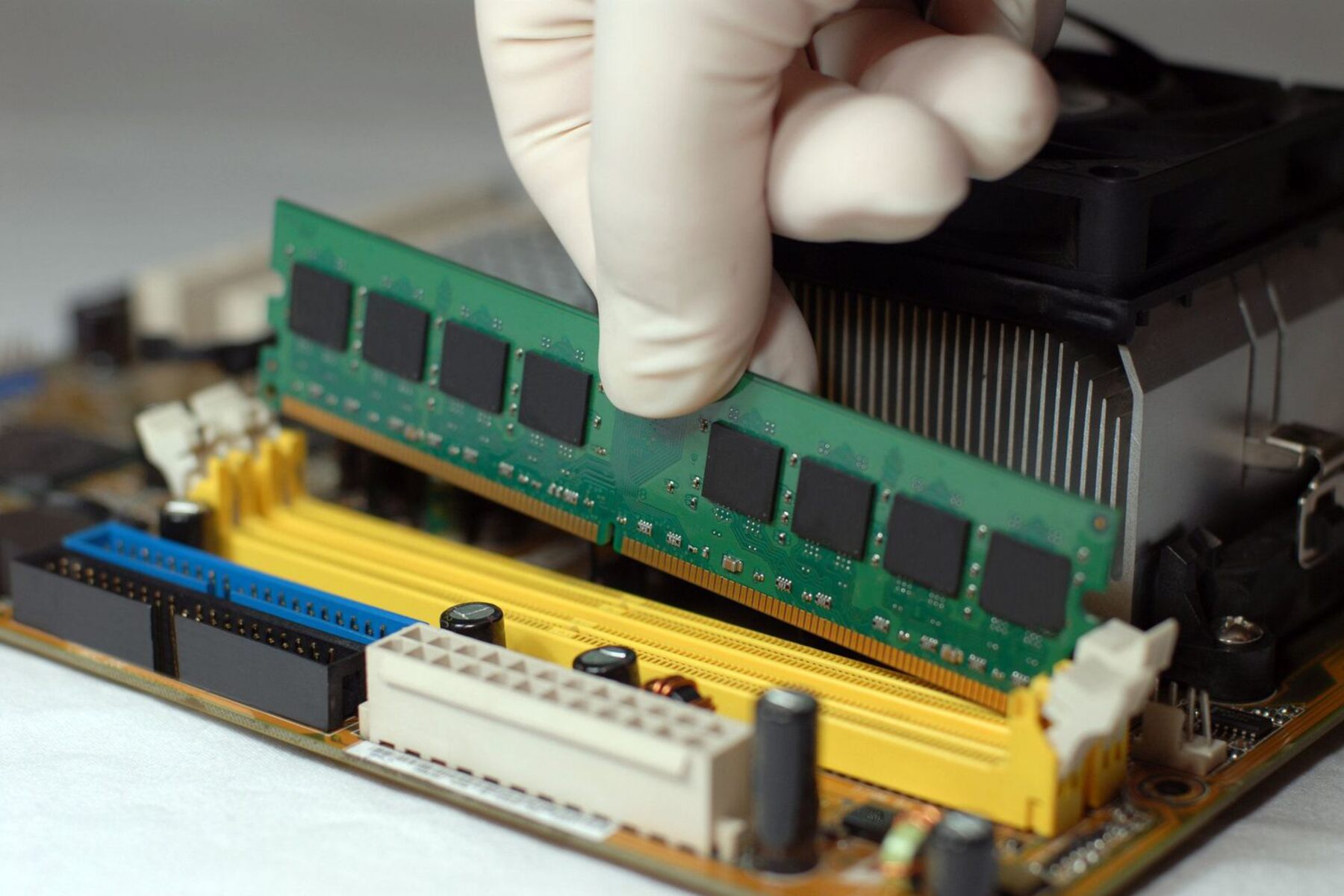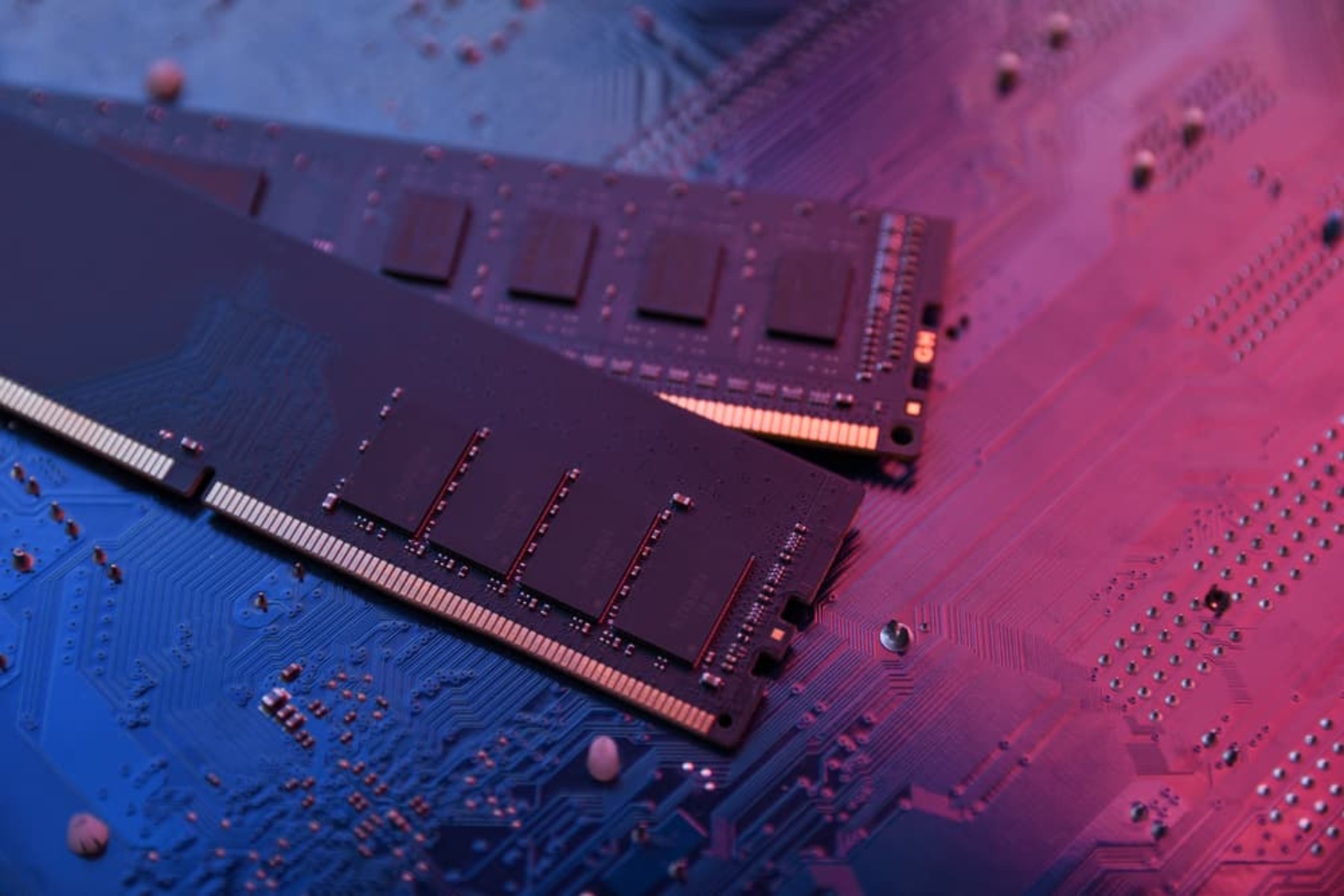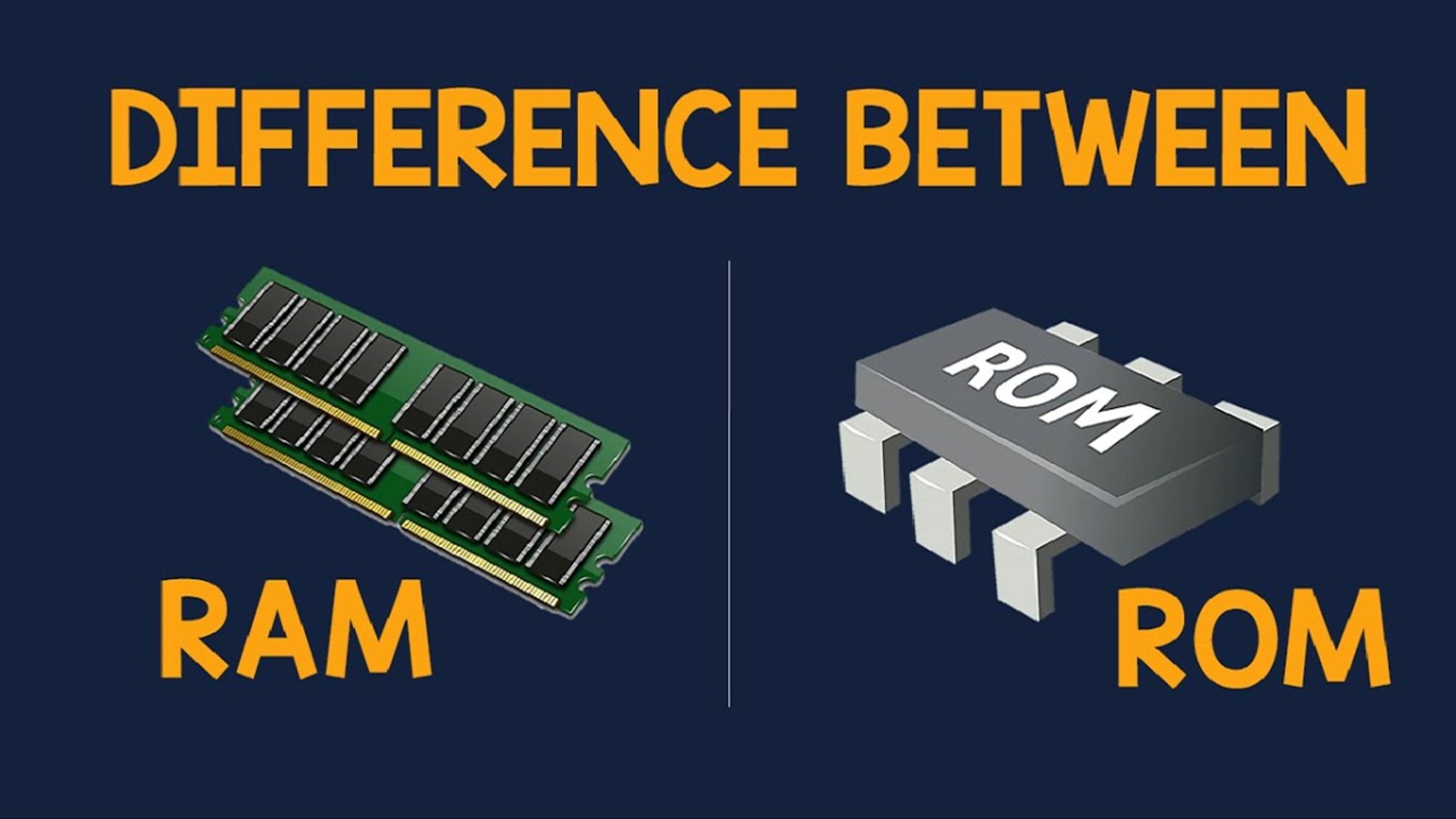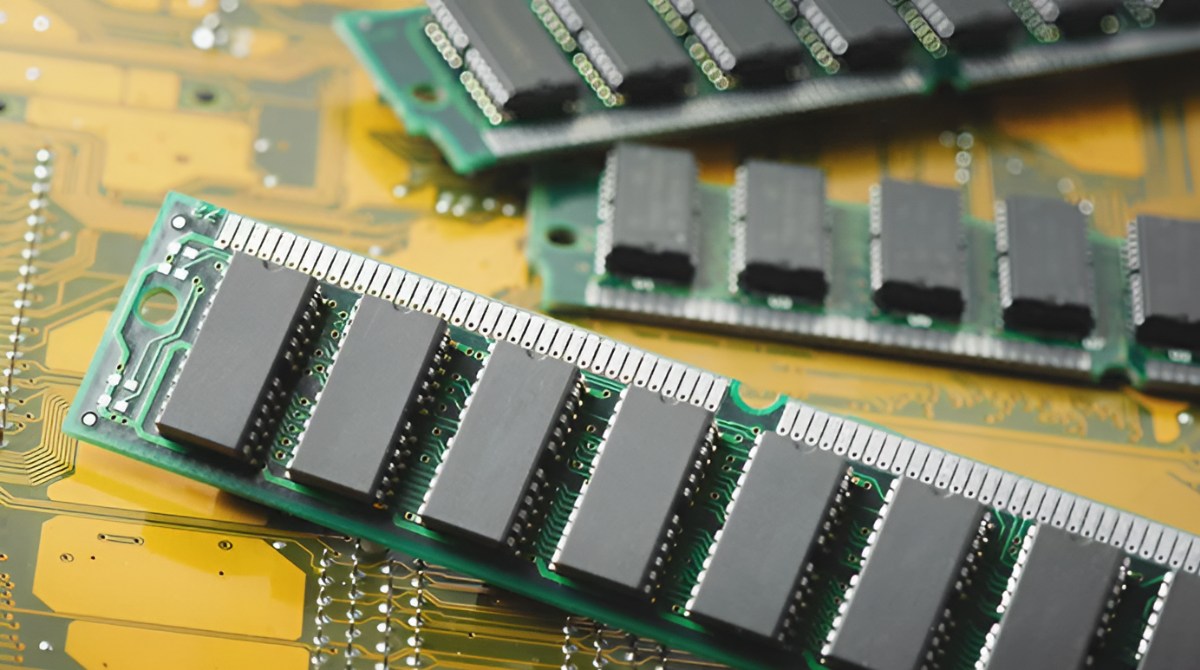Introduction
Choosing the right type of RAM for your computer is crucial for optimal performance. RAM, or Random Access Memory, plays a vital role in the overall speed and efficiency of your system. It acts as a temporary storage space for data that is actively being used by your computer’s processor.
With the continuous advancements in technology, it’s important to stay up to date with the latest RAM standards to ensure compatibility and maximize performance. The two most common types of RAM on the market are DDR4 and DDR3. In this article, we will explore the differences between these two types of RAM and help you determine which one is suitable for your computer.
Furthermore, we will discuss the difference between SODIMM and DIMM form factors, their respective advantages, and which one is appropriate for your system. We will touch upon the importance of dual-channel memory, the benefits of ECC (Error-Correcting Code) RAM over non-ECC RAM, and the distinction between buffered and unbuffered RAM. Additionally, we will delve into the significance of RAM frequency and capacity, and how to choose the right specifications for your specific needs.
By the end of this article, you will have a clear understanding of the different types of RAM available and be equipped with the knowledge to make an informed decision when it comes to upgrading or purchasing RAM for your computer.
DDR4 vs DDR3
When it comes to RAM, DDR4 and DDR3 are the two most prevalent standards available today. DDR4, which stands for Double Data Rate 4, is the newer generation of RAM, while DDR3, or Double Data Rate 3, is the previous generation. The main difference between these two standards lies in their speed, efficiency, and compatibility.
DDR4 RAM offers several advantages over DDR3. First and foremost, DDR4 operates at a higher clock speed, which translates to faster data transfer rates. This results in improved overall system performance, allowing for quicker data access and retrieval. DDR4 RAM also requires less voltage to operate, resulting in lower power consumption and generating less heat compared to DDR3.
Furthermore, DDR4 RAM modules have a higher maximum capacity, enabling you to add more RAM to your system, which can be beneficial for tasks that require a larger memory buffer, such as video editing or running multiple virtual machines. However, it’s important to note that the maximum capacity also depends on the motherboard’s specifications.
While DDR4 RAM offers superior performance and efficiency, it is important to consider compatibility when deciding between DDR4 and DDR3. DDR4 RAM is not backward compatible with DDR3 slots, meaning you cannot install DDR4 RAM on a motherboard that only supports DDR3. However, some newer motherboards support both DDR3 and DDR4, providing flexibility for users who want to upgrade gradually.
Additionally, DDR4 RAM tends to be more expensive than DDR3 due to its newer technology and improved specifications. The price difference can vary depending on the brand, capacity, and speed of the RAM module.
In summary, DDR4 RAM offers faster data transfer rates, lower power consumption, and higher maximum capacity compared to DDR3. However, compatibility with your motherboard and budget constraints should also be taken into account when choosing between DDR4 and DDR3.
DDR4 RAM
DDR4 RAM, or Double Data Rate 4 Random Access Memory, is the latest generation of RAM technology. It offers several advancements over its predecessor, DDR3. DDR4 RAM modules are designed to be faster, more efficient, and capable of handling higher data transfer rates.
One of the main advantages of DDR4 RAM is its faster clock speed compared to DDR3. DDR4 RAM typically operates at speeds ranging from 2133 MHz to 3200 MHz or even higher. This increased speed allows for quicker data access, resulting in improved overall system performance.
In addition to speed, DDR4 RAM also offers improved energy efficiency. It requires lower voltage to operate, typically ranging from 1.2V to 1.35V. This lower voltage not only reduces power consumption but also results in less heat generation. As a result, DDR4 RAM helps to keep your system cool and prevents overheating issues, especially during intense tasks or long periods of usage.
Another significant benefit of DDR4 RAM is its increased capacity. DDR4 modules can have a higher maximum capacity compared to DDR3, allowing for more memory to be installed in your system. This can be particularly advantageous for demanding tasks that require a large memory capacity, such as video editing, 3D rendering, or running virtual machines.
Furthermore, DDR4 RAM incorporates improved error correction technology, referred to as CRC (Cyclic Redundancy Check). This technology helps to detect and correct errors in data transmission, enhancing the stability and reliability of your system.
It is important to note that when upgrading to DDR4 RAM, you need to ensure that your motherboard supports DDR4. DDR4 RAM has a different physical design and uses a different slot called a DDR4 DIMM (Dual Inline Memory Module). Therefore, it is crucial to check your motherboard’s specifications to ensure compatibility before purchasing DDR4 RAM.
Overall, DDR4 RAM offers faster speeds, lower power consumption, increased capacity, and improved error correction compared to DDR3. Upgrading to DDR4 RAM can provide a significant boost in performance for your computer, especially when paired with other high-end components.
DDR3 RAM
DDR3 RAM, or Double Data Rate 3 Random Access Memory, is the previous generation of RAM technology that has been widely used in computers for many years. Although it has been surpassed by DDR4, DDR3 RAM still offers reliable performance and is suitable for many computing needs.
One key advantage of DDR3 RAM is its compatibility with a wide range of older systems. DDR3 modules can be installed in motherboards that support DDR3 slots, making it a feasible option for upgrading older computers or replacing faulty RAM sticks.
DDR3 RAM modules come in various clock speeds, typically ranging from 800 MHz to 2133 MHz. While DDR3 may not offer the same level of speed as DDR4, it is still capable of delivering adequate performance for everyday computing tasks, such as web browsing, document editing, and multimedia playback.
Another advantage of DDR3 RAM is its affordability. Since it is an older technology, DDR3 RAM modules are generally more cost-effective compared to DDR4. This makes it an attractive option for users on a budget who may not require the latest and highest performing RAM for their specific needs.
DDR3 RAM also offers decent capacity options, with modules available in sizes ranging from 2GB to 16GB or even higher. While it may not be able to match the capacities available in DDR4 RAM, DDR3 still provides sufficient memory for most everyday tasks and even some resource-intensive applications.
It’s important to note that DDR3 RAM operates at a higher voltage compared to DDR4. DDR3 RAM typically requires 1.5V to 1.65V, resulting in slightly higher power consumption and heat generation. However, modern motherboards are designed to handle this increased voltage without issues.
Overall, DDR3 RAM remains a viable option for users who are looking for a cost-effective and compatible solution for their systems. While it may not offer the same level of speed and energy efficiency as DDR4, DDR3 RAM can still provide satisfactory performance for everyday computing tasks.
SODIMM vs DIMM
When it comes to RAM, there are two main form factors: SODIMM and DIMM. SODIMM, which stands for Small Outline Dual Inline Memory Module, is primarily used in laptops, compact computers, and other small form factor devices. On the other hand, DIMM, or Dual Inline Memory Module, is commonly found in desktop computers and server systems. These two form factors have specific characteristics that make them suitable for different types of systems.
SODIMM RAM modules are physically smaller in size compared to DIMM modules. They measure around 67.6 mm x 30 mm, making them ideal for devices with limited space. Laptops, all-in-one computers, and mini PCs typically utilize SODIMM RAM due to their compact design. SODIMM modules usually come with fewer pins (204 pins for DDR3 and DDR4), which is different from the 240 pins of a standard DIMM module. It is essential to verify the compatibility of your system before purchasing RAM to ensure that it supports SODIMM modules.
DIMM RAM, on the other hand, is the standard form factor used in traditional desktop computers and servers. DIMM modules are larger, measuring around 133.35 mm x 30 mm for DDR3 and DDR4. These modules come with more pins (240 pins for DDR3 and DDR4) and allow for higher capacity options compared to SODIMM. DIMM RAM is designed to provide high performance and is commonly used in systems that require extensive multitasking, gaming, or other memory-intensive tasks.
It’s important to note that SODIMM RAM and DIMM RAM are not interchangeable. The physical differences in size and pin configuration mean that SODIMM RAM cannot be installed in a DIMM slot and vice versa. When upgrading or purchasing RAM for your system, it’s crucial to check your motherboard’s specifications and ensure compatibility with the correct form factor.
In summary, SODIMM and DIMM RAM differ in size, pin configuration, and the types of systems they are commonly used in. SODIMM RAM is suitable for laptops and compact devices, while DIMM RAM is the standard for desktop computers and servers. Understanding the differences between these form factors is essential to select the appropriate RAM for your specific system requirements.
SODIMM RAM
SODIMM RAM, which stands for Small Outline Dual Inline Memory Module, is a form factor primarily used in laptops, mini PCs, and other small form factor computers. SODIMM RAM modules are physically smaller in size compared to their DIMM counterparts, making them ideal for devices where space is limited.
The compact size of SODIMM RAM allows it to fit into laptops and other portable devices with smaller motherboard designs. These modules measure around 67.6 mm x 30 mm, making them significantly smaller than the standard DIMM modules used in desktop computers. It is important to note that SODIMM modules have fewer pins than DIMM modules, typically 204 pins for both DDR3 and DDR4.
SODIMM RAM modules offer various advantages for laptops and small form factor computers. One of the key benefits is their power efficiency. Due to their smaller size, SODIMM modules require less power to operate, resulting in extended battery life for laptops and lower power consumption for portable devices.
Another advantage of SODIMM RAM is that it is easier to upgrade or replace in laptops compared to desktop computers. Laptops often have specific compartments or panels that provide easy access to the RAM slots, making it convenient for users to upgrade their memory capacity. SODIMM modules can be easily inserted and removed without requiring additional tools or complicated installation processes.
SODIMM RAM modules are available in various capacities, ranging from 2GB to 32GB, depending on the specific DDR version and manufacturer. This allows for flexibility in choosing the appropriate memory capacity based on your computing needs. However, it is essential to check your laptop’s specifications to determine the maximum supported RAM capacity before upgrading.
While SODIMM RAM is primarily designed for laptops, it can also be used in some small form factor desktop computers, such as mini PCs and compact workstations. These devices often have smaller motherboards that support SODIMM slots, allowing for more streamlined and space-efficient designs.
In summary, SODIMM RAM is a compact form of memory module designed for laptops and small form factor computers. Its smaller size, lower power consumption, and ease of upgrade make it an ideal choice for portable devices. When considering RAM upgrades or replacements for your laptop or small form factor computer, be sure to check the compatibility and maximum capacity supported by your system’s motherboard.
DIMM RAM
DIMM RAM, which stands for Dual Inline Memory Module, is the standard form factor used in desktop computers and servers. DIMM modules are larger in size compared to SODIMM modules and provide high-performance memory for demanding computing tasks.
One of the key advantages of DIMM RAM is its larger capacity options. DIMM modules are available in various capacities, ranging from 4GB to 128GB or even higher, depending on the specific DDR version and manufacturer. This allows for ample memory for resource-intensive applications, such as video editing, 3D rendering, and gaming.
DIMM RAM modules have more pins compared to SODIMM modules, typically 240 pins for both DDR3 and DDR4. This increased pin count allows for a higher bandwidth and faster data transfer rates, resulting in improved system performance. DIMM RAM’s faster data access and transfer speeds make it ideal for multitasking, heavy workloads, and memory-intensive applications.
Furthermore, DIMM RAM modules often operate at higher clock speeds compared to SODIMM RAM. DDR3 DIMM modules can range from 1066 MHz up to 2133 MHz, while DDR4 DIMM modules can start at 2133 MHz and go up to 3200 MHz or even higher. Higher clock speeds provide faster data access and retrieval, resulting in smoother and more efficient system performance.
DIMM RAM is commonly used in desktop computers due to its larger physical size. Traditional tower-style desktop cases easily accommodate DIMM modules, allowing for easy installation and upgrade. Unlike in laptops where space is limited, desktop motherboards typically have enough space to support multiple DIMM slots, enabling users to increase their memory capacity as needed.
In addition to desktop computers, DIMM RAM is also widely used in servers. Servers often require extensive multitasking and large amounts of memory to handle multiple simultaneous requests and data-intensive operations. DIMM modules offer the capacity, speed, and reliability necessary to meet the demands of server environments.
When upgrading or replacing DIMM RAM, it is important to ensure compatibility with your motherboard. Different motherboards support different DDR versions, such as DDR3 or DDR4, so it is essential to check your motherboard’s specifications and ensure that the RAM modules you choose are compatible.
In summary, DIMM RAM provides high-performance memory for desktop computers and servers. Its larger capacity options, faster data transfer rates, and compatibility with various DDR versions make it ideal for multitasking, gaming, and memory-intensive applications. Whether you’re upgrading your desktop or setting up a server, DIMM RAM is a reliable choice to enhance system performance and memory capacity.
Dual Channel Memory
Dual Channel Memory refers to the method of installing memory modules in pairs on a computer’s motherboard to improve memory performance. By utilizing multiple modules simultaneously, Dual Channel Memory allows for faster data transmission and increased memory bandwidth.
To enable Dual Channel Memory, you need to have a motherboard that supports this feature and install compatible memory modules in the correct configuration. Typically, Dual Channel Memory requires pairs of identical memory modules, such as DDR3 or DDR4, to be installed in specific slots on the motherboard.
When memory modules are installed in Dual Channel mode, they work together to transfer data simultaneously, doubling the memory bandwidth compared to a single module configuration. This results in improved system performance, especially in memory-intensive tasks such as gaming, video editing, and multitasking.
Dual Channel Memory provides several benefits for system performance. The increased memory bandwidth allows for faster data transfer rates between the memory and the processor, reducing data bottlenecks and improving overall system responsiveness. This is particularly beneficial for tasks that involve frequent data access and retrieval.
Furthermore, Dual Channel Memory can provide a noticeable boost in gaming performance. Games often require fast access to large amounts of data, including textures, models, and game assets. By utilizing Dual Channel Memory, the system can deliver data to the graphics card more efficiently, resulting in smoother gameplay, reduced stuttering, and faster loading times.
It’s important to note that to take advantage of Dual Channel Memory, all memory modules installed must be the same capacity and have the same specifications, including speed, timings, and voltage. Mismatched modules or incompatible memory configurations can prevent the system from utilizing Dual Channel mode effectively.
While Dual Channel Memory offers significant performance benefits, it is important to consider that the actual impact on overall system performance will depend on the specific workload and applications. Some tasks may see a more noticeable improvement compared to others.
In summary, Dual Channel Memory is a technique that enhances memory performance by utilizing pairs of identical memory modules. By doubling the memory bandwidth, Dual Channel Memory improves data transmission speed and boosts system performance, especially in memory-intensive tasks. When setting up a system or upgrading memory, make sure to check your motherboard’s compatibility and install matching memory modules to take advantage of Dual Channel Memory benefits.
ECC vs Non-ECC RAM
ECC (Error-Correcting Code) and Non-ECC RAM are two types of memory modules that differ in terms of error detection and correction capabilities. These technologies are primarily used in servers, workstations, and mission-critical systems where data integrity is of utmost importance.
Non-ECC RAM, also known as unbuffered RAM, is the more common type of RAM used in consumer-grade desktop computers and laptops. Non-ECC RAM modules do not have error correction capabilities and are therefore more affordable compared to ECC RAM modules.
ECC RAM, on the other hand, is specifically designed to detect and correct errors that occur during data transmission. It utilizes additional circuitry to detect and correct single-bit errors, which can help prevent data corruption and improve system reliability. ECC RAM is commonly found in servers, workstations, and enterprise-level systems where data accuracy is critical.
The primary advantage of ECC RAM is its ability to prevent data corruption caused by single-bit errors. These errors can occur due to various factors, such as electromagnetic interference, cosmic radiation, or manufacturing defects. By detecting and correcting these errors in real-time, ECC RAM helps to ensure data integrity and reduce the risk of system crashes or data loss.
However, it’s important to note that ECC RAM does not provide protection against multi-bit errors or all types of memory-related issues. It is primarily designed to address single-bit errors, which are the most common type of errors that occur during data transmission.
Non-ECC RAM, while lacking error detection and correction capabilities, is still suitable for most consumer-grade systems. For everyday tasks such as web browsing, document editing, and multimedia playback, the chances of encountering critical errors are relatively low. Non-ECC RAM is also more cost-effective, making it a popular choice for budget-conscious users.
When deciding between ECC and Non-ECC RAM, it is important to consider the specific requirements and intended use of the system. If you are running a server or workstation that handles critical data or performs complex calculations, ECC RAM can provide an added layer of reliability and data integrity. For consumer-grade systems, Non-ECC RAM is usually sufficient and offers a more affordable option.
In summary, ECC RAM provides error detection and correction capabilities that help ensure data integrity in servers, workstations, and mission-critical systems. Non-ECC RAM, on the other hand, is suitable for consumer-grade systems where error prevention is not as critical. When choosing between ECC and Non-ECC RAM, consider the specific demands and requirements of your system to make an informed decision.
Buffered vs Unbuffered RAM
Buffered and unbuffered RAM, also known as registered and unregistered RAM, are two different types of memory modules that vary in terms of their electrical characteristics and performance characteristics. These designations refer to the presence or absence of a register, which is a small buffer chip located on the memory module itself.
Unbuffered RAM, also referred to as unregistered RAM, is the most common type of RAM used in consumer-grade desktops and laptops. It connects directly to the memory controller on the motherboard without any additional buffering or processing. Unbuffered RAM offers lower latencies, meaning it has faster response times, which can result in slightly improved performance for certain tasks.
On the other hand, buffered RAM, also known as registered RAM, utilizes a register or buffer chip that sits between the memory module and the memory controller on the motherboard. The buffered design helps improve stability and reliability, particularly in systems that require large amounts of memory or have many memory modules installed.
The main advantage of buffered RAM is its ability to reduce electrical load on the memory controller. The register acts as a traffic controller, managing data flow and helping to address signal integrity issues. It can handle higher memory capacities and tighter timings, making it ideal for demanding applications, such as servers and workstations.
Buffered RAM modules are commonly used in server environments and other high-performance systems that require extensive multitasking and memory-intensive operations. The buffer helps to reduce electrical noise and signal degradation, which can occur when there are multiple memory modules or long traces on the motherboard.
However, buffered RAM comes with a trade-off. The addition of the register introduces a small amount of latency, which can slightly slow down memory access times compared to unbuffered RAM. This latency may not have a noticeable impact on everyday computing tasks but can be more significant in applications that require low-latency memory access, such as gaming or real-time audio/video processing.
It is important to note that buffered and unbuffered RAM modules are not interchangeable. They have different electrical characteristics and are designed for specific types of systems. When upgrading or purchasing RAM, it is crucial to check your motherboard’s specifications to determine the type of RAM supported and choose the appropriate module accordingly.
In summary, unbuffered RAM provides faster response times and is commonly used in consumer-grade systems, while buffered RAM offers improved stability and better performance for high-capacity and memory-intensive systems, such as servers and workstations. Understanding the differences between buffered and unbuffered RAM is essential when selecting the appropriate RAM module for your specific system requirements.
RAM Frequency
RAM frequency, also known as memory speed, refers to the speed at which the RAM module operates and communicates with the computer’s processor. It is an important factor in determining the performance and responsiveness of a computer system.
RAM frequency is measured in megahertz (MHz) and represents the number of cycles the RAM module can complete in one second. The higher the RAM frequency, the more data the RAM module can transfer per second, resulting in faster data access and retrieval.
It’s important to note that RAM frequency is often tied to the motherboard’s capabilities and the memory controller. The RAM module will operate at the highest frequency supported by both the RAM module itself and the motherboard. If the motherboard or memory controller can only handle a certain frequency, the RAM module will automatically adjust to that speed.
Higher RAM frequencies can provide noticeable performance improvements, particularly in memory-intensive tasks and applications. For example, tasks such as video editing, 3D rendering, and gaming can benefit from higher RAM frequencies as they require frequent access to large amounts of data.
However, it’s important to understand that the actual impact of RAM frequency on overall system performance can vary depending on the specific workload and the rest of the system’s configuration. In some cases, the performance difference between different RAM frequencies may be negligible, especially for everyday tasks like web browsing and document editing.
Overclocking is another aspect to consider when it comes to RAM frequency. Overclocking involves increasing the RAM frequency beyond its default rating to push for higher performance. Not all RAM modules are capable of handling overclocking, and doing so may void the warranty or potentially cause stability issues. It is important to research and ensure that both the RAM modules and the motherboard support overclocking before attempting it.
When upgrading or purchasing RAM, it is crucial to check the supported RAM frequencies of both your motherboard and the RAM modules themselves. Opting for RAM modules with higher frequencies may provide a performance boost, but it is essential to ensure compatibility with your system to avoid any compatibility issues.
In summary, RAM frequency plays a significant role in determining the speed and performance of a computer system. Higher RAM frequencies can lead to faster data access and retrieval, particularly in memory-intensive tasks. However, the actual impact on system performance can vary depending on the specific workload and other system configurations. When considering RAM upgrades, ensure compatibility with the motherboard and research the capabilities and limitations of both the RAM modules and the system before making a decision.
RAM Capacity
RAM capacity, also known as memory capacity, refers to the amount of memory that a computer system can support or the amount of RAM installed in the system. It plays a crucial role in determining the system’s ability to handle multiple tasks simultaneously and efficiently.
The RAM capacity required for a system depends on the specific needs and usage patterns of the user. Everyday computing tasks such as web browsing, document editing, and multimedia playback can typically be handled with lower RAM capacities. However, resource-intensive tasks such as video editing, 3D rendering, and running virtual machines may require larger RAM capacities to ensure smooth performance.
RAM capacity is measured in gigabytes (GB) or terabytes (TB). Common RAM capacities for consumer-grade systems range from 4GB to 32GB, although higher capacities are available for workstations and server systems.
When determining the appropriate RAM capacity for your system, it is important to consider the specific requirements of your applications and operating system. Different operating systems have specific recommendations for minimum and recommended RAM capacities. For example, Windows 10 generally requires a minimum of 4GB of RAM but recommends 8GB or higher for optimal performance.
In addition, the number of applications and processes running simultaneously also affects the required RAM capacity. Running multiple applications concurrently or using memory-intensive software may require a larger RAM capacity to provide sufficient memory space for all tasks.
It’s important to note that the RAM capacity is limited by the capabilities of the motherboard. Each motherboard has a maximum supported RAM capacity, which can vary depending on the model and specific motherboard specifications. It is essential to check the motherboard’s documentation or specifications to determine the maximum RAM capacity it supports before purchasing or upgrading RAM.
Upgrading the RAM capacity of a system can provide a significant performance improvement, especially if the system is currently experiencing slowdowns or reaching its memory limits. Adding more RAM allows for smoother multitasking, faster data access, and improved overall system responsiveness.
However, it’s important to ensure that the RAM modules you purchase match the specifications and limitations of your motherboard. This includes compatibility with the motherboard’s supported RAM types, frequencies, and capacities.
In summary, RAM capacity is the amount of memory that a computer system can support or the amount of RAM installed in the system. The appropriate RAM capacity depends on the specific requirements of your applications, the operating system, and the motherboard’s limitations. Upgrading the RAM capacity can enhance system performance and enable smoother multitasking, provided it is done within the limitations of the motherboard and system requirements.
Conclusion
Choosing the right type, capacity, and frequency of RAM for your computer is essential for optimal performance and efficiency. With the plethora of options available, understanding the differences and features of various RAM types can help you make an informed decision.
DDR4 RAM offers faster data transfer rates, lower power consumption, and higher maximum capacities compared to DDR3 RAM. While DDR4 is the newer technology, DDR3 RAM remains a suitable and cost-effective option for many consumer-grade systems.
SODIMM RAM is the smaller form factor primarily used in laptops and compact devices, while DIMM RAM is the standard form factor used in desktop computers and servers. Choosing the appropriate form factor ensures compatibility with your system’s motherboard.
Considerations such as dual-channel memory, ECC vs non-ECC RAM, and buffered vs unbuffered RAM also play a role in optimizing system performance and ensuring data reliability. These factors are particularly important for mission-critical systems and server environments.
When it comes to RAM capacity, it is vital to assess the specific requirements of your applications and operating system. Larger RAM capacities can provide smoother multitasking and better performance for memory-intensive tasks, while smaller capacities are suitable for everyday computing needs.
Lastly, paying attention to the RAM frequency can contribute to faster data access and retrieval, particularly in memory-intensive applications. However, the impact on overall system performance may vary depending on the specific workload and other system configurations.
Ultimately, the right choice of RAM depends on your specific needs, budget constraints, and the compatibility of your system. Consulting the motherboard’s specifications, considering the requirements of your applications, and balancing performance with cost is crucial when selecting the appropriate RAM for your computer.
By understanding the different aspects of RAM technology and considering your specific needs, you can make an informed decision and optimize your computer’s performance with the right RAM configuration.







